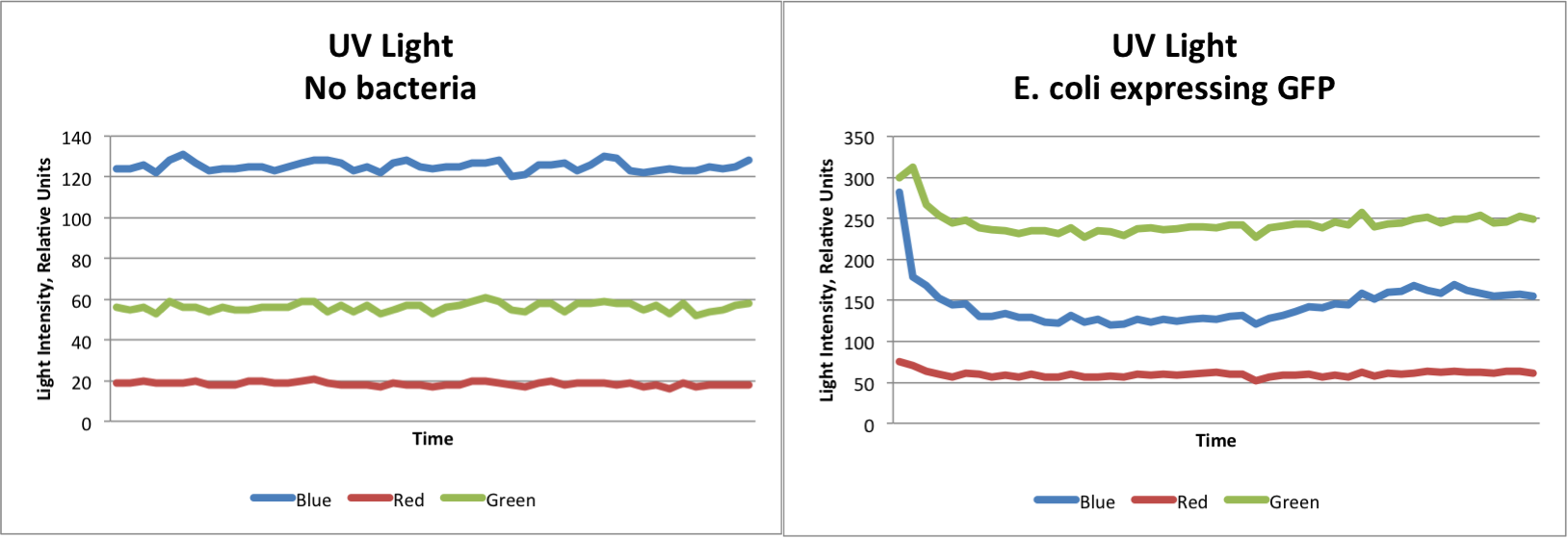Template:NCSSM iGEM 2013
From 2013hs.igem.org
Project
Biosensors provide a wide variety of applications, particularly analyte detection in the environment. Positive results in biosensors lead to the output of a reporter, commonly in the form of fluorescent proteins. Here we construct a biosensor that is capable of indicating the presence of various pollutants in water through expression of several different fluorescent proteins. We selected lead, copper, phosphate, and nitrate/nitrite promoters and paired them with specific reporter coding sequences. Presence of these ions drives the transcription of specific fluorescent proteins. Detection of these proteins is enabled through a light detection apparatus and the information can be sent to mobile devices in a user-friendly interface via a modified Google ADK. This novel multibiosensor can be implemented to detect pollutants in sewer systems, septic tanks, and other sources of water, and provide and early-detection warning system, preventing the pollutants from causing serious harm to equipment, animals, or people.
The goal of this project, therefore, was to develop a multi-input logic gate in Escherichia Coli, which can detect the presence of a number of environmentally degrading compounds, and for each, produce a unique colorimetric output. We applied some principles of electrical engineering by using a Google ADK to sense this colorimetric output and send an alert. We envision that for an end-user, our elegant synthetic biology solution will allow a homeowner to easily and effectively be notified of the need for inspection of their septic system. The product has applications in water quality tests, sewage treatments plants, and in industry where the presence of pollutants could be harmful to equipment, workers, or consumers.
Notebook
To begin our experiment, we needed to create a device that could detect color. We chose to use the Google ADK, an open ended platform that allows users to take control of many sensors that come attached to an Arduino board, including a colorimeter. However, a standard ADK is set up to match any color presented to it, using LED lights. In some of our preliminary tests, the reflection of the light from these LEDs skewed data. Therefore, we modified the code of the ADK, using Google's software developer package, so that it does not turn on its LED lights but instead outputs colorimeter data to a computer. An example of this output is shown below.
As a foray into our project, we first took some preliminary data using our modified Google ADK and pGLO E. coli expressing Green Fluorescent Protein. We found that we were able to detect a distinct change in color. Some baseline color was present from the UV Light source used for the experiment. The graphs below clearly show that our system is able to detect E. coli expressing GFP.
Small LED lights were used to test the ADK's ability to detect red, blue, and yellow lights. The results showed the same trends as the GFP test, indicating that we would be able to distinguish between several different colors expressed. In general, red, green, and blue lights show dramatic increases in the intensity of that color, while the other two colors remain about the same. Yellow light however, increase both red and green light, while blue remains at the same level. From these observations, we are able to identify which type of light is shown based only on the data collected.
 "
"

